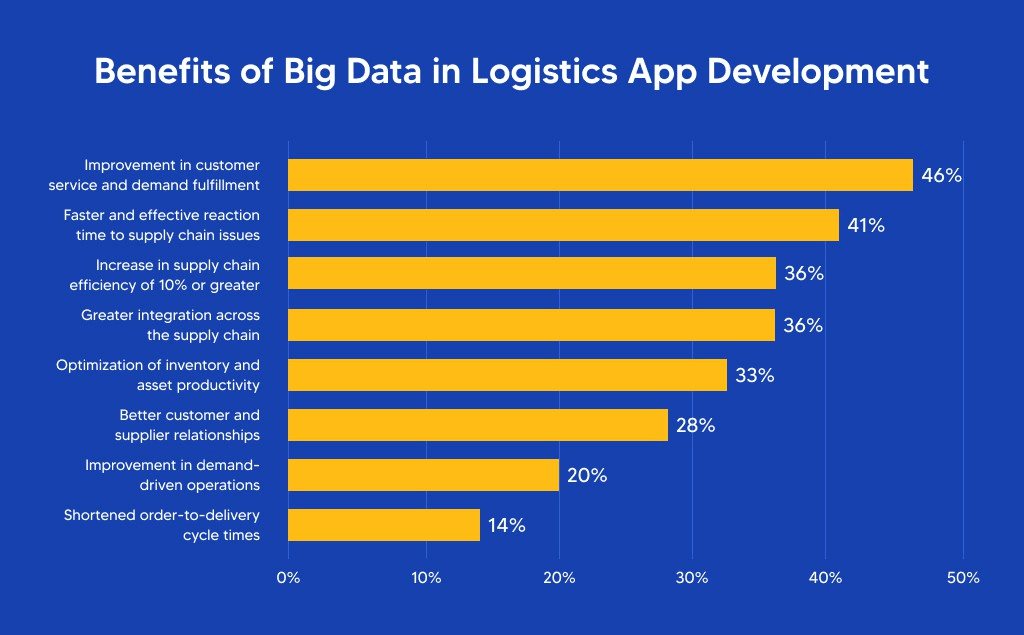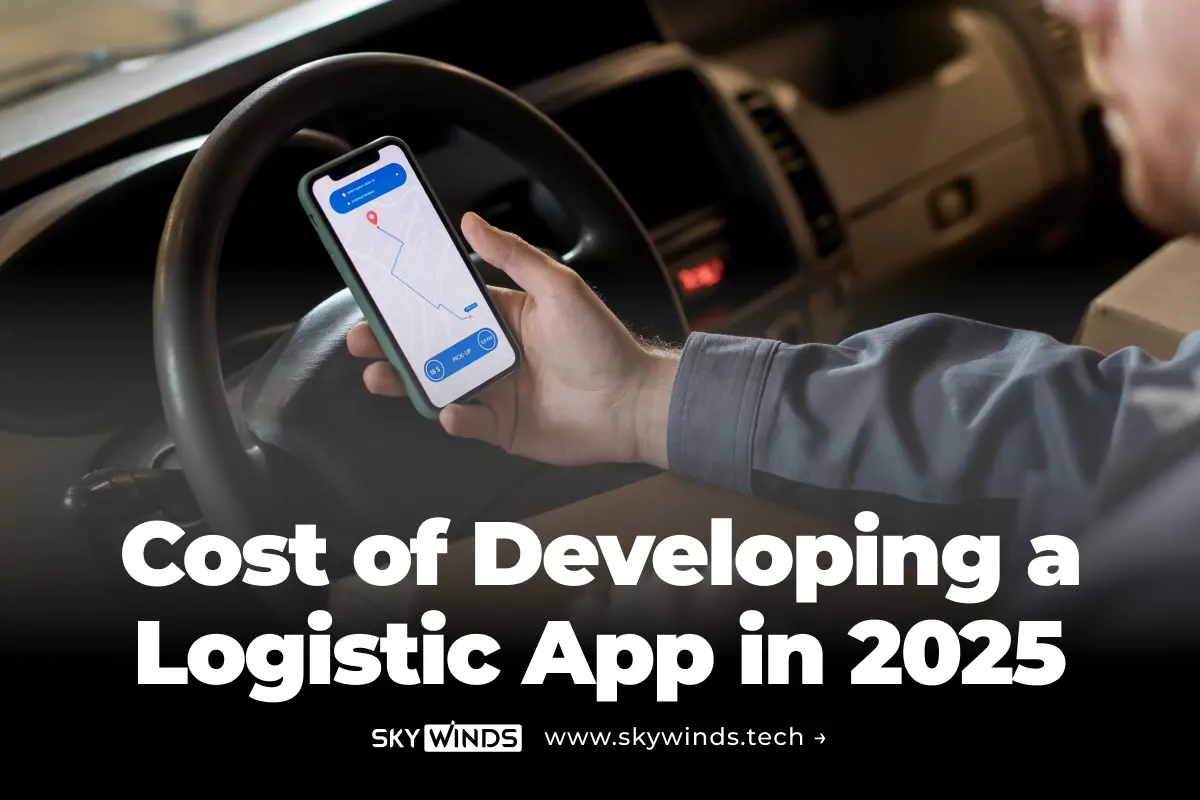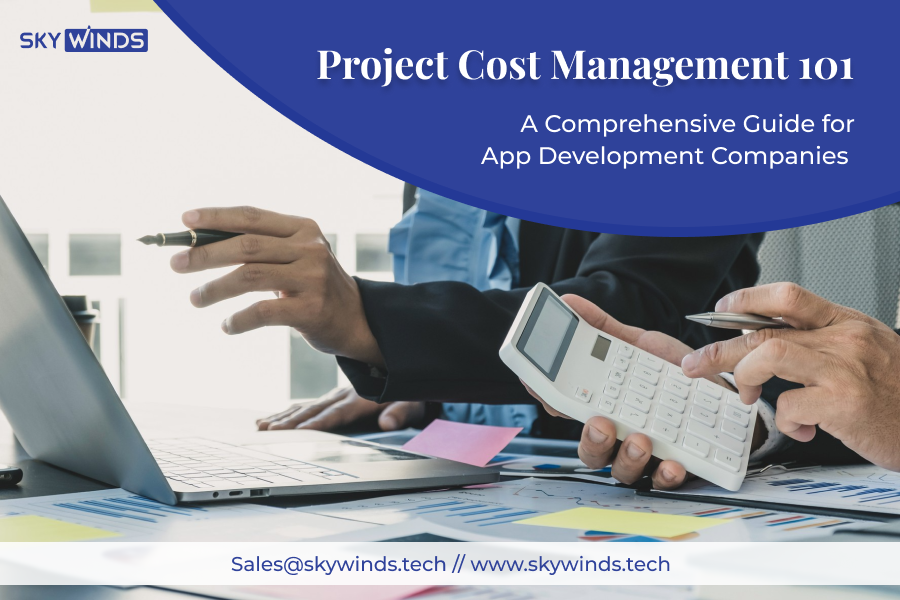The concept of the Logistics App was limited to the transportation of products It has now evolved into a stream of processes that include stock supply, efficient planning of the routes, and efficient flow of information between companies and consumers. The increasing pressure to improve the efficiency and effectiveness of their services is driving logistics firms to adopt technology as part of their strategic outlook These apps represent an important part of this push towards technological innovation.
The logistics sector has been transforming globally because of technological changes and the increasing need for supply chain solutions. In 2025 particularly, there will be a rise in demand for logistics apps so that business operations will become more efficient and customer service delivery will be effective. But what does it cost to develop a logistics app?
Table of Contents
What is a Logistics App?
A logistics app is an application created to address different requirements of the supply chain and transportation sectors. It uses the latest technologies in its operations to increase productivity, streamline communication, and cut expenses. Logistics apps enable organizations to handle tasks that include stock management, route planning, shipment tracking, vehicle coordination as well as client interactions.
All of these apps have a great role in managing the logistic challenges and introducing apps for automatism and data analysis for manual tasks. Its core is a logistics app that is a single point of interaction and coordination with other stakeholders such as managers, drivers, and customers. To businesses, it offers an avenue to increase transparency and thereby ineffability of operations which in turn enhances decision-making and resource utilization. For customers, it provides the simplest method for tracking shipments and stylish real-time updates.
It can be customized to its client’s needs whether a small-scale delivery service or an international supply chain management. They include such features as auto-notifications, payment gateways, and links to other business systems; logistics applications are critical to ensure current logistic companies remain viable and competitive in this fast-paced transportation and logistics business world.
Logistics mobile application development cost in 2025?
The developing cost of the logistics application in India depends on the functionality and features incorporated in the application, the incorporation of technology, and last but most importantly the developers. Considering these factors, the cost is between ₹4,00,000 and ₹40,00,000 and can even go higher in 2025. India is known to charge low prices but still service quality, which surely leads to outsourced rates lower than those associated with outsourcing towards developed countries in the West. The actual cost of delivering several applications is relatively small to medium in comparison with what the industry is experiencing; however, applications with high-class and efficient features may involve costs that run into over ₹60,00,000.

Type and complexity of a logistics app:
Logistics apps are used to define the variety of features, functions, and flexibility options necessary to address unique commercial requirements. These factors affect the developmental process, time frame, and cost factors to a great extent. Depending on the sophistication, logistics apps can be of three types – basic, intermediate, and advanced applications, which are designed for basic, intermediate, and advanced levels respectively.
A simple logistics app is created for those companies that are still developing or those that require only basic features of a logistics system. These apps are often equipped with such tools as real-time tracking, inventory management, and route planning at minimum. The user interface is also quite simple, as the main focus is on achieving friendly and easily understandable interfaces for the drivers and the administration. The cost to develop a basic application is consequently within the range of ₹10,00,000 and ₹20,00,000, while the time required for development will be less than it is for a WAP application – approximately 3 to 6 months.
Intermediary logistics apps are appropriate for moderately large companies that need extra functionality to optimize their activities. Such applications may also contain options for route planning, vehicle management, payment options, driver rostering, and comprehensive performance reviews. It costs between ₹20,00,000 to ₹35,00,000/- to develop the likes of such apps and the development could take anything between a 6 to 9 months period.
An advanced logistics app is suitable for enterprises that will require many logistics services because of the complexity of their supply chain. These apps utilize advanced solutions like AI-based analytics for demand forecasting, IoT for monitoring vehicles and shipments, and blockchain solutions for secure transactions. The creation of such multi-functional applications calls for a lot of money, from ₹35,00,000 to ₹1 crore or above and it may likely take 9-12 months or more.
The level of functionality and the integration of technology into a logistics app plays a big role in its complexity. A basic app has only tracked some possible features, for example, they do not use any tracking number or a static interface with very limited interactivity and it can be done very quickly and at minimum cost.
A moderately complex app includes performance-enhancing options like dynamic route optimization, multi-role access to the app, and payment gateways, making it ideal for regional use. An ultra-complicated app includes AI integrated application, IoT devices, multiple platform compatibility, and highly engaging custom interface designs. This is because these apps are developed to meet the needs of large corporations involved in international shipping and diverse supply systems.
To create a successful logistics app, you need to follow these steps:
1. Planning and Design:
First, make sure you know your audience and find out what value proposition your app brings to the table. Outline how you want to structure the core and the extra facilities intended to be incorporated into the system. An effective design layout of the information architecture with efficient and coherent navigation.
2. Technology Selection and Development:
Decide on a proper technology stack: frontend, backend, the choice of the database, and the cloud. Design and build the app relying on agile frameworks, and perform testing at various stages. Get customer feedback to effect changes where needed.
3. Security and Privacy:
Security is best achieved through using compiled encryption, foolproof authentication, and routine security assessment. Keep the users’ information more private, and meet the industry-specific data protection standards.
4. Launch and Marketing:
Help your app rank higher in app stores to ensure that it gets noticed easily. Combine social networks, content marketing, and email marketing to reach people and share anything to promote your app and attract good reviews.
5. Post-Launch Support and Updates:
Go through the various metrics about your app on an ongoing basis as well as obtain users’ feedback. Launch new versions to support the fixing of some glitches and add new dishes to the list and new options for the users.
Conclusion
The cost of creating a logistics app in 2025 is influenced by factors of development complexity, platform, number of features, and the country of development. Primarily for the cost of such investment may seem quite large in the short term, the benefits regarding the company’s operating efficiency, cost, and customer satisfaction will outweigh the costs in the long run.
By working with a good logistics software development company, one is assured of the fulfillment of business requirements and other market requirements that come with a logistics application. Updating your software services through improving the transportation and logistic technology trends tends to allow the company to compete favorably.



